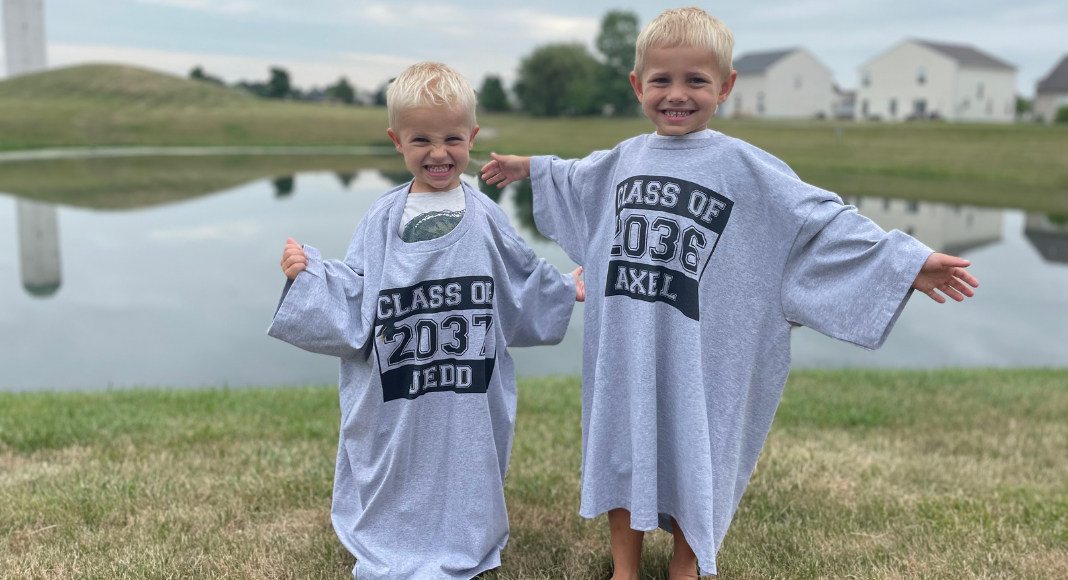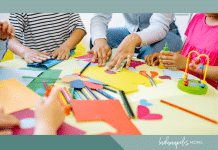 Early childhood is a special time for our children. They are being introduced to the world one day at a time. Our children should be learning through play, interest-led projects, and being involved in daily tasks to learn life skills.
Early childhood is a special time for our children. They are being introduced to the world one day at a time. Our children should be learning through play, interest-led projects, and being involved in daily tasks to learn life skills.
For the past three years, I have been homeschooling my oldest, and my youngest joined in at year two. We began doing preschool homeschool when my oldest was two. Before staying home with my children I was an elementary school teacher for seven years. The teaching part I felt confident with, but choosing a preschool homeschool curriculum was intimidating because I had never taught preschool. There’s also a different kind of pressure when it is your own children and you’re making all of the decisions alone. Going through the different preschool curriculum options made my head spin!
To help narrow my focus, I had to know clearly what our family values are and the vision for our day-to-day. When I began preschool homeschooling I wanted it to be very heavily play-focused. My boys were two and seven months old so they definitely weren’t going to be sitting around a table doing worksheets. You may be thinking, “Isn’t that too young to be thinking about homeschooling?” In my opinion, no it is not. Let me rephrase that question. Is it too young to expect children to sit at a table and do math worksheets or writing practice? Yes. But is it too young for children to learn through play? No.
By beginning at a young age, I have been able to establish expectations and routines that my children now do without much direction. (They still have their days when they seem to have forgotten all of these expectations and routines, but hey, they’re still only three and almost five years old.)
The first curriculum that I chose for my children was Playing Preschool Year 1, by Busy Toddler (Susie Allison). We did this curriculum twice, then did Playing Preschool Year 2, also by Busy Toddler.
Busy Toddler (@busytoddler on Instagram) introduced me to sensory bins, dot stickers, and toy painting (if you know, you know). If you are unfamiliar with sensory bins, in particular, these are plastic bins (or other types of containers) filled with themed items for the children to search for and explore. The themed items are in either rice, beans, water, etc. for the children to search through. Honestly, with sensory bins – the limit does not exist.
Here are some examples of sensory bins we have done that are not rice (traditionally seen in sensory bins):
Gardening unit: mulch, rocks, soil, fake flowers, gardening tools
Farm unit: edamame noodles, farm animals, fences, barn, and tractors
Construction unit: beans, track, construction toys, rocks (with added alphabet)
Arctic unit: snow, ice, water, arctic animals
By beginning sensory bins with my children while they were so young, I was able to create those expectations and routines around the activity. Trust me, the first several times my oldest explored a sensory bin there was rice all over the floor. It took practice, patience, and reminders of expectations. At first, I had to sit there with him to ensure that he wasn’t redecorating our house with rice. It wasn’t an overnight process. But now, I’m able to set up a sensory bin and leave it in our playroom for them to explore when they desire.
For this upcoming school year, I have chosen our curriculum and already started my planning process for each unit. For this year, I have chosen to use The Peaceful Press curriculum.
Similar to Busy Toddler, Playing Preschool highlights the importance of motor skills development in the early years (fine and gross motor) and allows space for interest-led learning, creative projects, and play.
The Peaceful Press (@thepeacefulpress on Instagram) provides opportunities to promote and engage in meaningful conversation around literature, poems, short stories, and scripture. One of my favorite components of The Peaceful Press is how it provides opportunities for intentional learning of life skills and each week there is a recipe to follow for the children to learn how to bake or cook something.
The Peaceful Press also has a curriculum all the way through elementary so depending on if we like the preschool curriculum and if we continue to choose homeschool for our family then I liked knowing I had the option to stick with this curriculum.
Another homeschool curriculum I heavily considered for this school year was The Good and the Beautiful.
I am not an expert on choosing a preschool curriculum or teaching preschool, but I am an expert on what is best for my children. If you have been homeschooling your preschool-aged children and are looking for a curriculum or if you are new to preschool homeschooling and need to choose a curriculum, first decide what type of homeschooling environment you want to create for your children. Outline your family values and keep in mind what type of learners your children are and their interests. You are the expert on your own children. I hope this helps you feel more confident in choosing a preschool curriculum for your children.
If you’d like to join us on our journey through the Peaceful Preschool this upcoming school year, please join us on my Instagram.








